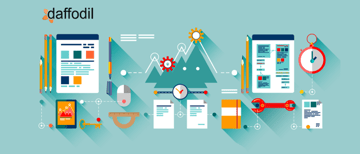
At the I/O 2021, Google announced the release of Flutter 2.2, the latest release of the open-source toolkit for building cross-platform apps. The new version now makes it easier to monetize the app through in-app purchases, add payments and ads to the application, connect to cloud services & APIs that help in extending app functionality, etc. Apart from this, Flutter is updated with new tooling and language features that help developers increase app performance and reduce the package size.
In March 2021, Flutter 2 was released which extended the support to build web, desktop, and mobile UIs. Built on the foundation of Flutter v2, the new version (2.2) have a few interesting updates. For example:
- The toolkit is introduced with new widgets for both Android, iOS, macOS, and Linux that are bundled with app design to perform specific functions in order.
- The new ads SDK is updated with null safety and has support for adaptive banner formats. The new payment plugin is built in partnership with the Google Pay team that allows taking payments for physical goods on the Android and iOS platforms. Moreover, the in-app purchase plugin for Flutter is updated.
- Dart, the programming language for Flutter gets an update in the new release. It supports native interoperability, with support for packed structs and arrays in FFI. In addition to this, Dart has got support for aliases that would increase readability and pathway for refactoring scenarios.
- Sound null safety now defaults for all new Flutter projects. The Null safety adds protection against null reference exceptions. The compiler can eliminate null checks at runtime, thereby improving the app performance.
In its annual developer conference 2021, Google also shared some interesting stats about Flutter and its growth. It affirms that that 1 in 8 apps on the PlayStore is built using Flutter.
The PlayStore has over 200,000 apps built using the platform. Flutter is a part of some large-scale and innovative apps. For example, WeChat messaging app that has over 1.2 billion userbases on Android and iOS uses Flutter. ByteDance (the originators of apps like TikTok) uses Flutter for over 70 apps that it developed.
Other popular names like BMW, SHEIN, DiDi, Grab, Alibaba, Reflectly have Flutter-based apps. And not just these big brands, innovative apps such as Kite (investment trading app), Wombo (singing selfie app) are built using the Flutter framework.
Flutter has found use cases beyond app development. For example, Toyota is bringing Flutter to their next-gen vehicle infotainment systems. Samsung is porting Flutter to Tizen (a Linux-based Operating System) with an open-source repository.
Flutter is Ready to Build Beautiful Interfaces
Flutter is one of the most popular front-end development frameworks with over 45% of developers choosing it to build interactive interfaces. With the new version, the toolkit has become a choice for building more reliable and performant apps. What do you think about the potential of Flutter after its major updates (v2 and v2.2)? Share with us in the comments below
\



